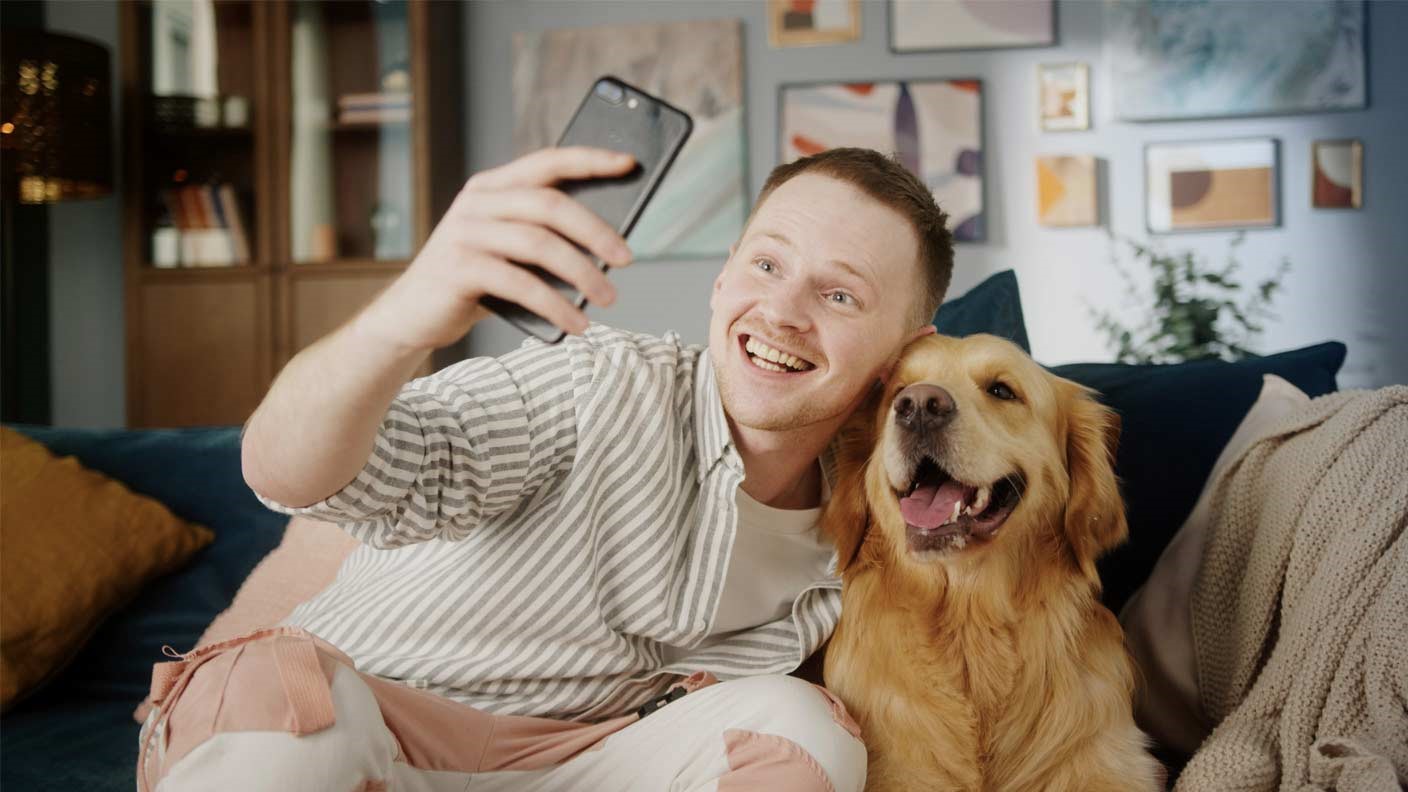Dog behaviours explained
To really understand what your dog is trying to tell you, it's important to observe their movements, listen to the noises they make and look out for any changes in your dog’s behaviour.
You may think you know exactly what your dog is saying by wagging its tail, for example. But reading dog body language isn’t always that straightforward. For example, were you aware that tail wagging can signify a several things – from feeling excited, playful or attentive, to apprehensive and even slightly nervous?
Our guide offers an overview of some of the most common dog behaviours and expressions, to help you understand what exactly your dog is trying to communicate.
Common dog behaviours
There’s a few things that all dogs do – young and old. The below are examples of things you’ll probably have noticed your dog doing that are totally normal in the canine world – even if they seem a bit strange to us.
Dog faces
- Dog looking straight at you, with ears up and tongue exposed.
I’m happy because you’ve just shown me affection or offered me a treat. - Eyes are open, bright, unblinking and a little intense.
I’m alert and concentrating on something important like a ball, a treat or you. - Ears pricked up, whites of eyes showing.
I’m fearful – I don’t like the look of those nail clippers! - Lips pulled back, teeth exposed, ears flat.
Stay away – I’m preparing to bite! - The tell-tale tongue.
When my tongue and lips are loose and floppy, I’m content and relaxed.
Noises dogs make
- Rising bark.
I want to play – hurry up and throw that ball already! - Howling.
This is often my response to a high-pitched sound, such as a police or fire siren. - Low growling.
I’m feeling fearful/ threatened. This is my way of saying “back off”! - Whining.
I am anxious, excited, nervous or trying to communicate something to you.
Dog body language
- Head high, ears up, mouth open with tongue slightly exposed, tail drawn and relaxed.
I’m relaxed, unthreatened and usually approachable. - Eyes wide, mouth closed, ears forward and twitching, tail horizontal and moving from side to side.
I’m alert because I’ve detected something of interest, or something unknown. - Tail wagging, front end lowered, mouth open with tongue exposed.
This is called the ‘play bow’ and may be accompanied by excited barking or playful attacks and retreats. - Upright, forward ears.
I’m attending to what is directly in front of me.
Other dog behaviours
There are also a few other things your dog might do but just not as regularly as the above. These aren’t usually a cause to be concerned by but if you are worried at all be sure to take your dog to the vets. As you spend the most time with your dog, you’ll be able to tell if something isn’t right with them.
- The rocking horse run.
When I’m playing, I run in a very particular way, rocking back and forth like a child’s rocking horse. - A low, fast-wagging tail.
I’m slightly anxious. Think of this as the canine equivalent to a nervous laugh. - Middle-level, fast, wide-wagging tail.
I’m very excited and happy to see you! - Digging.
This behaviour goes back to our days as wolves when burying our dinner for later was a necessity. - Dog sniffing another dog’s behind.
It might seem very rude to you, but this is our way of saying hello to other dogs. - Licking me.
If I’m stressed, I might lick myself to calm down, clean myself or ease agitated skin. - Licking you.
I don’t lick just anybody. It’s a sign of affection, attention or maybe that it’s snack time. - Panting.
Panting lets me cool down because unlike people I can’t cool down by sweating. But it can also be a sign I am stressed. - Shaking.
I don’t have a towel, so I shake to dry. I’m good at it but sometimes I don’t notice my surroundings. - Humping.
Humping seems rude to you, but it can be a sign of my playfulness and excitement. Sometimes, it could mean I’m stressed, looking for attention or asserting dominance. - Chewing.
I’m a dog I just like to chew! But when I’m a puppy it soothes my teeth. If I’m being destructive by chewing, I could be stressed or bored. - Following.
I follow those I trust but sometimes if I’m anxious I don’t want to be left alone.
Now you know a little more about understanding dog behaviour, you’ll be able to connect more with your pooch.
Senior dog behaviours
Senior dog behaviours can sometimes be concerning – especially if they’re acting very different to their younger selves. It’s important to contact your vet if you’re worried about an older dog just to check there aren’t any medical reasons for the changes.
Look after your dog and protect yourself from unexpected vet bills, should your dog come to any harm, with Sainsbury’s Bank Pet Insurance.
FAQs
How to know when a dog isn’t feeling well?
Look out for changes in behaviour, sickness and diarrhoea and changes in their appetite. If you’re at all concerned about your dog take them to see the vet to be checked over.
How to tell when a dog is stressed?
Panting and pacing around are key signs a dog may be feeling stressed. If the whites of their eyes are showing and their ears are pinned back it’s a clear sign your dog is feeling anxious about something.
